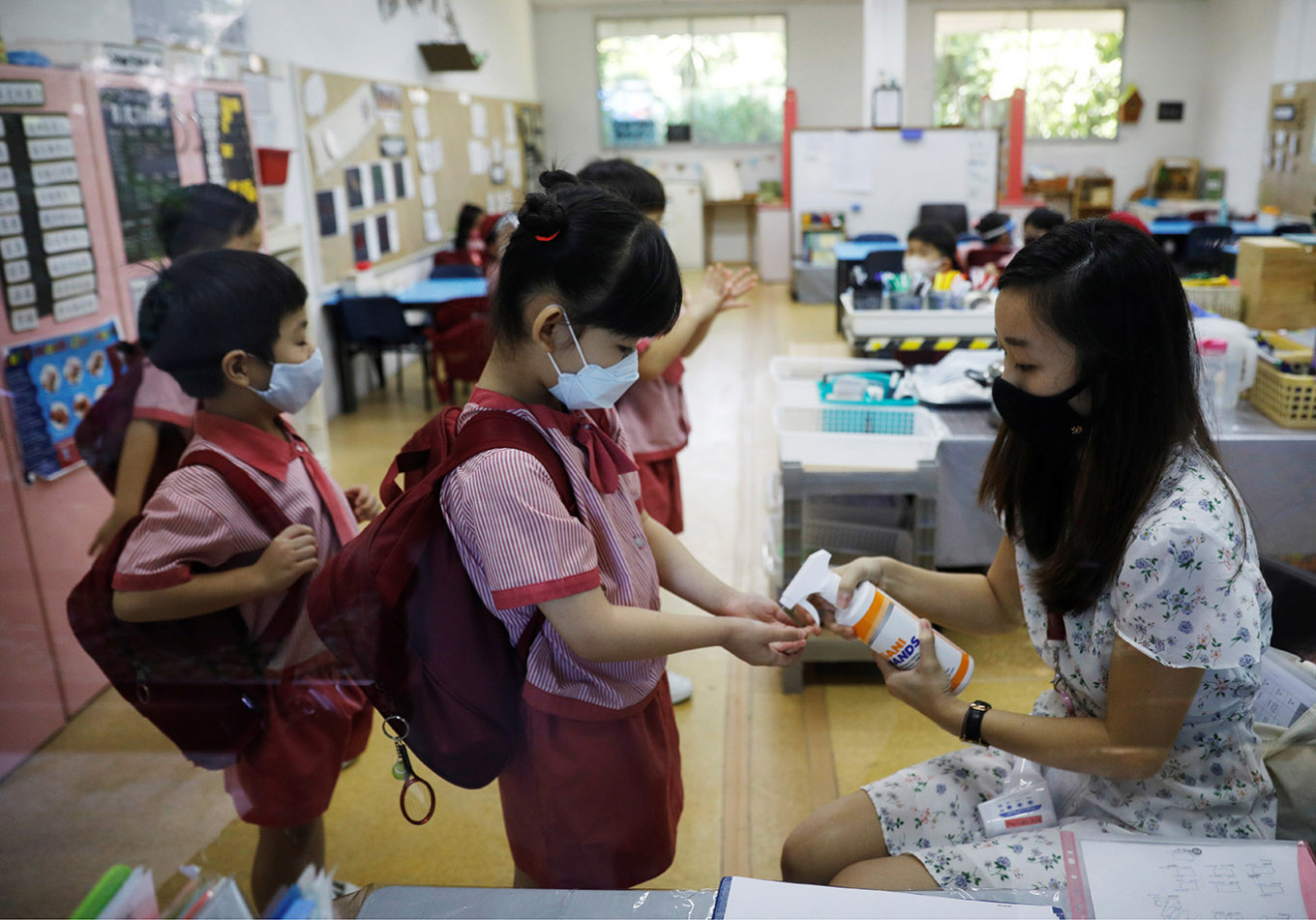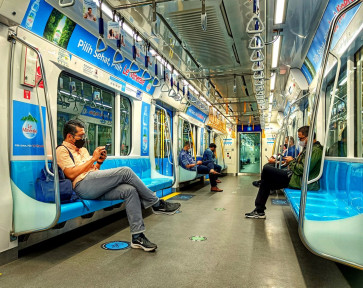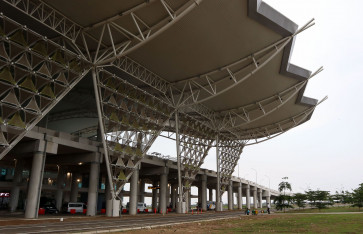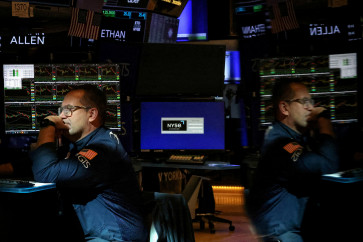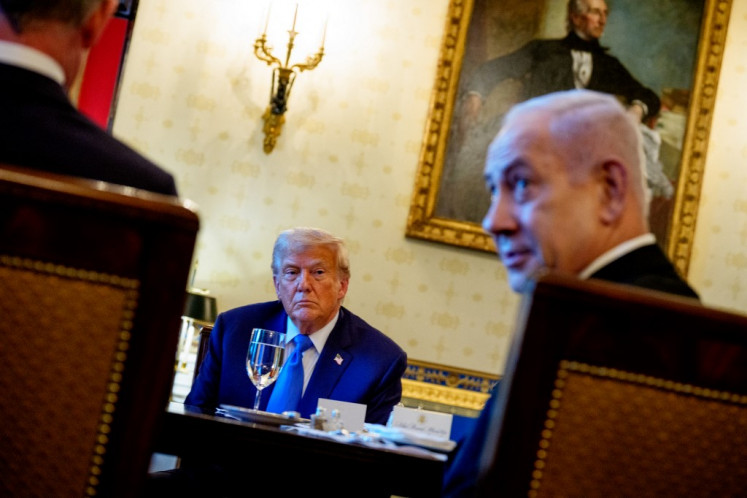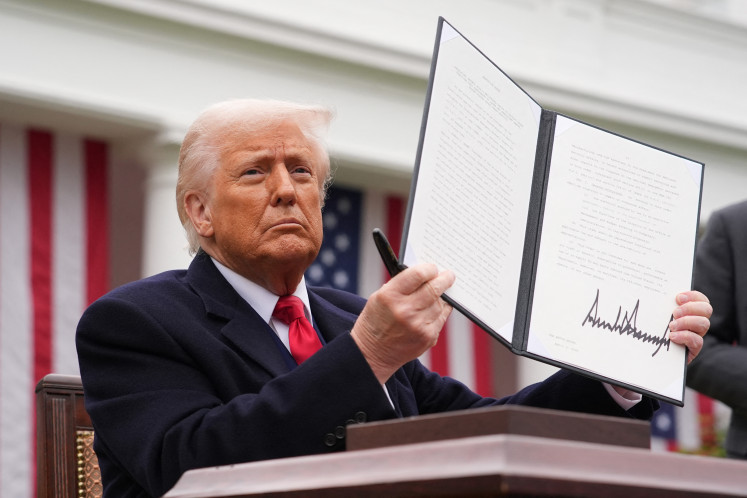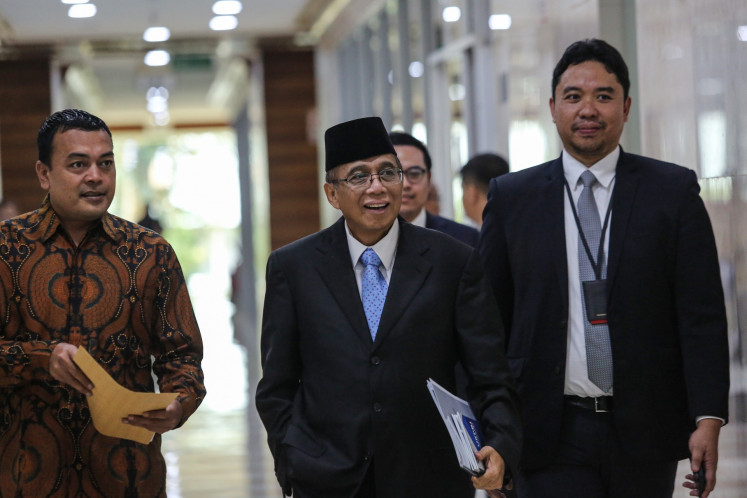Popular Reads
Top Results
Can't find what you're looking for?
View all search resultsPopular Reads
Top Results
Can't find what you're looking for?
View all search resultsRevisiting ASEAN cooperation
The problem is that no matter the efforts to create a common front among the member nations, the pandemic is exposing the structural weaknesses of the Southeast Asian community not only in dealing with a unique, once-in-a-century situation like the one created by COVID-19 but also in other more ordinary, dayto-day issues.
Change text size
Gift Premium Articles
to Anyone
M
any insights have been shared about how member nations of the ASEAN community can forge a common front against the COVID-19 pandemic. Hardly surprising, so far, the united response from the community has not been what many were hoping for.
The ASEAN example is not an exception, and the ongoing public health and economic crises experienced by the region because of the disease, without forgetting a geopolitical dimension recently compounded by a more and more assertive China in the South China Sea, are showing how inadequate the response mechanisms of the Southeast Asia bloc are.
It is not that there have not been any attempts to bring together a collective response from ASEAN as a string of virtual summits of the leaders of each member state, sectoral ministries and technical experts have been occurring day after day lately.
The problem is that no matter the efforts to create a common front among the member nations, the pandemic is exposing the structural weaknesses of the Southeast Asian community not only in dealing with a unique, once-in-a-century situation like the one created by COVID-19 but also in other more ordinary, dayto-day issues.
No matter how much Singaporean Prime Minister Lee Hsien Loong highlights the fact that none of the member nations of the bloc are self-sufficient and invokes a spirit of further cooperation and the need to “resist the temptation to turn inward and away from one another,” the pillars of the regional cooperation projects are flawed.
Only a long-term determination compounded by a genuine visionary leadership can reset the terms and conditions through which ASEAN can truly thrive as a community of nations.
In dealing with the pandemic, as underscored by Indonesian President Joko “Jokowi” Widodo, in the immediate term, the member nations should do their best to maximize the use of the existing mechanisms rather than wasting time in setting up new ones.
The problem is that most such mechanisms are simply not up to the challenges being faced. For example, the ASEAN Center for Humanitarian Assistance in Disaster Management (AHA Center) was tapped as a potential key player for storage of essential equipment required during the ongoing crisis.
While leveraging an existing mechanism is certainly useful, we should take into account the institutional capacity to deliver.
The AHA Center is certainly proving a useful institution in the disaster-management response within the region but it is a relatively new organization and it takes time to build the capacities and expertise, provided that enough resources are invested in it.
Only very recently the center helped with the reconstruction of 75 houses that were destroyed during the 7.4-magnitude earthquake that rocked Palu in Central Sulawesi, killing around 4,300 people in September 2018. If it took almost two years to build 75 houses, it would be unfair to seriously expect that the AHA Center can be tasked with a stronger mandate within the COVID-19 emergency.
Moreover, the center remains an intergovernmental body, meaning that the member nations are calling the shots rather than the ASEAN Secretariat. This is just a symptom of a wider approach where decision-making in the various institutions and mechanisms lies exclusively in the respective capitals.
At the same time the thematic ministerial meetings are too rare and do not go far enough in their decision-making, something not unexpected considering that the heads of governments meet only once a year.
These are only the most perceptible dysfunctions marring the community.
Other examples more related to the unfolding crisis is the fact that Cambodia, as chair of the ASEAN Health Ministers’ and ASEAN Senior Officials for Health Development, is supposedly taking the lead in coordinating the health emergency rather than Vietnam, the current chair of the bloc or the fact that Singapore is current coordinator of the ASEAN-European Union Dialogue Partnership, a partnership format that could be extremely useful in the current situation.
Why not entrust the annual chair of the community or the Secretariat with the coordination of all these foreign partnership dialogues?
It is here where the real problem with ASEAN lies; the fact that regional cooperation mostly functions at the inter-governmental level with only the member nations supposedly taking charge in a very fragmented, silolike approach.
The EU, the most advanced example of regional cooperation, has been able to be effective over the past decades only because its member states have devolved considerable power to truly “common” institutions, the European Commission and to a lesser extent the European Parliament.
It is not that such institutions have total, unchecked powers but rather they have to bargain and negotiate with the European
Council composed of leaders of each member state that have the final word.
The inability of the EU to promptly deal with this crisis and all the criticisms stemming from it is prompting new, until recently unthinkable, forms of further integration.
The big opportunity offered by the COVID-19 crisis is for ASEAN to rethink its strategic working approach, setting the foundations for stronger internal mechanisms that rely less on the individual members and more on a much more vigorous Secretariat in Jakarta equipped with more human resources but also with real decision-making and financing power.
For example, the ASEAN Development Fund, through which the COVID-19 response fund is based, should be turned into a much more ambitious financial mechanism to support the process of integration.
The pandemic can help ASEAN leaders realize that it is not time for tepid, tiny steps in the process of integration but rather an opportunity has arrived for some sort of quantum leap rethinking the way regional cooperation should work.
The leaders must ponder on what they are ready to give up in order to advance the project of regional integration, not just for the sake of dealing with a pandemic but to tackle future challenges too.
***
Cofounder of ENGAGE, a nonprofit organization promoting social inclusion in Nepal

